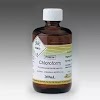Acid - Definition, Source, Classification, Properties , Uses and Common cautions
What is Acid?
The word ‘acid’ is derived from the Latin term “acidus” which means sour taste.
An acid is a chemical substance that is capable of donating a proton (hydrogen ion) to another substance.Such Substances with sour taste are called acids.
In 1884, a Swedish chemist Svante Arrhenius, proposed a theory on acids and bases. According to Arrhenius theory, an acid is a substance which furnishes H+ ions or H3 O+ ions in aqueous solution. They contain one or more replaceable hydrogen atoms. For example, when hydrogen chloride is dissolved in water, it gives H+ and Cl- ions in water.
HCl(aq)→ H+(aq)+ Cl-(aq)
What happens to an acid or a base in water? Do acids produce ions only in aqueous solution? Hydrogen ions in Hydrochloric acid are produced in the presence of water. The separation of H+ ion from HCl molecules cannot occur in the absence of water.
HCl + H2 O → H3 O++ Cl -
Hydrogen ions cannot exist alone, but they exist in combined state with water molecules. Thus, hydrogen ions must always be H+ (or) Hydronium (H3 O+).H++ H2 O → H3 O+
Classification of Acids
Acids are classified in different ways as given below:
(a) Based on their sources:
Organic Acids: Acids present in plants and animals (living things) are organic acids. Example: HCOOH, CH3 COOH
Inorganic Acids: Acids prepared from rocks and minerals are inorganic acids or mineral acids.Example: HCl, HNO3 , H2SO4
(b) Based on their Basicity
Monobasic Acid: Acid that contain only one replaceable hydrogen atom per molecule is called monobasic acid. It gives only one hydrogen ion per molecule of the acid in solution. Example: HCl, HNO3
Dibasic Acid: An acid which gives two hydrogen ions per molecule of the acid in solution. Example: H2SO4, H2 CO3
Tribasic Acid: An acid which gives three hydrogen ions per molecule of the acid in solution. Example: H3 PO4
(c) Based on Ionisation
Acids get ionised in water (produce H+ ions) completely or partially. Based on the extent of ionisation of acids are classified as below.
Strong Acids: These are acids that ionise completely in water. Example: HCl
Weak Acids: These are acids that ionise partially in water. Example: CH3 COOH.
(d) Based on Concentration
Concentrated Acid: It has relatively large amount of acid dissolved in a solvent.
Dilute Acid: It has relatively smaller amount of acid dissolved in solvent.
Properties of Acids
a) They have sour taste.
b) Their aqueous solutions conduct electricity since they contain ions.
c) Acids turns blue litmus red.
d) Acids react with active metals to give hydrogen gas.
Mg + H2 SO4 → MgSO4 + H2
↑ Zn + 2HCl → ZnCl2 + H2 ↑
e) Acids react with metal carbonate (Na2 CO3 ) and metal hydrogen carbonate (NaHCO3) to give carbon dioxide.
Na2 CO3 + 2HCl → 2NaCl + H2 O + CO2 ↑
NaHCO3 + HCl → NaCl + H2 O + CO2 ↑
f) Acids react with metallic oxides to give salt and water.
CaO + H2 SO4 → CaSO4 + H2 O
g) Acids react with bases to give salt and water.
HCl + NaOH → NaCl + H2 O
Uses of Acids
1.Sulphuric acid is called King of Chemicals because it is used in the preparation of many other chemical compounds. It is also used in car batteries.
2.Hydrochloric acid is used as a cleansing agent in toilets.
3.Citric acid is used in the preparation of effervescent salts and as a preservative in foods.
4.Nitric acid is used in the manufacture of fertilizers, dyes, paints and drugs.
5.Oxalic acid is used to clean iron and manganese deposits from quartz crystals. It is also used as bleach for wood and removing black stains.
6.Carbonic acid is used in aerated drinks.
7.Tartaric acid is a constituent of baking powder.
Role of water in acid solution
Acids show their properties only when dissolved in water. In water, they ionise to form H+ ions which determine the properties of acids. They do not ionise in organic solvents. For example, when HCl is dissolved in water it produces H+ ions and Cl - ions whereas in organic solvents like ethanol they do not ionise and remain as molecule.
You Try and Know Why ?
Take about 10 ml of dilute hydrochloric acid in a test tube and add a few pieces of zinc granules into it. What do you observe? Why are bubbles formed in the solution? Take a burning candle near a bubble containing hydrogen gas, the flame goes off with a ‘Popping’ sound. This confirms that the metal displaces hydrogen gas from the dilute acid.
Common Caution:
Care must be taken while mixing any concentrated inorganic acid with water. The acid must be added slowly and carefully with constant stirring to water since it generates large amount of heat. If water is added to acid, the mixture splashes out of the container and it may cause burns when exposure on skin.








0 Comments